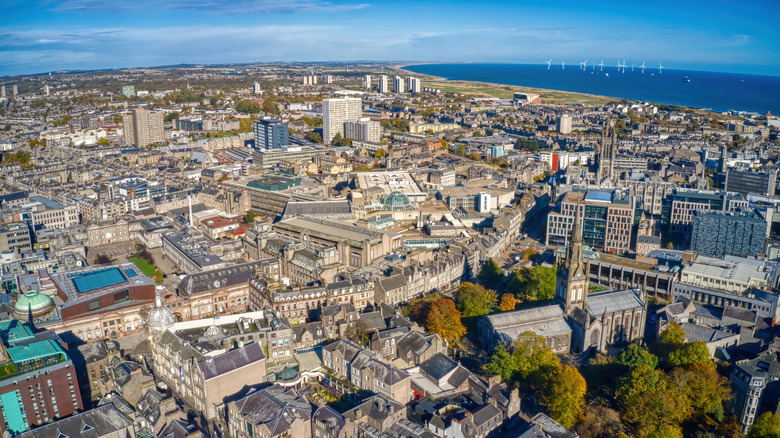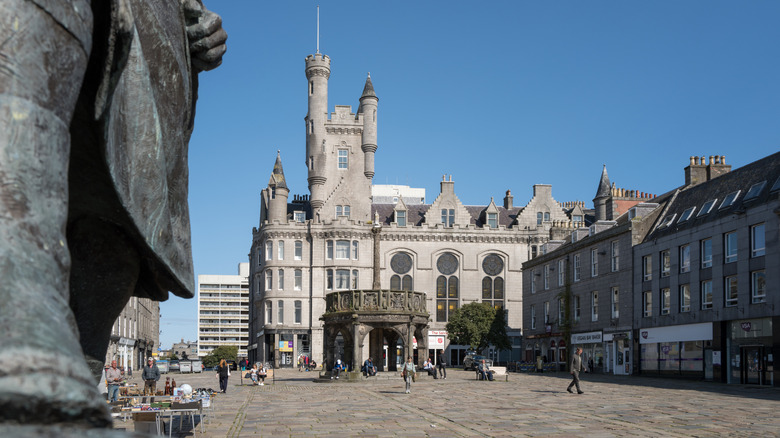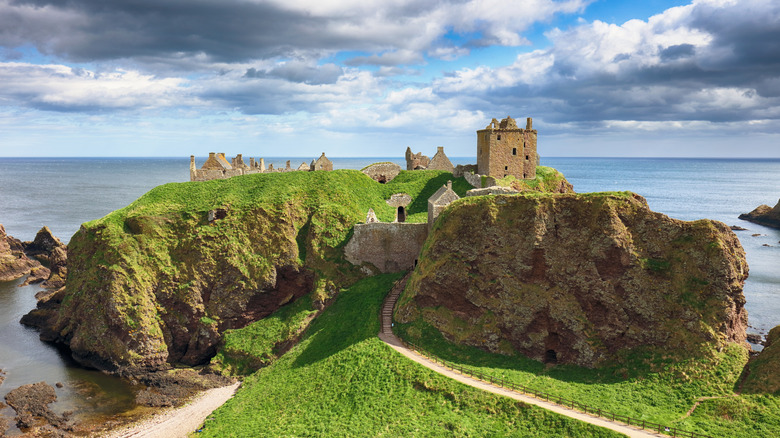Scotland's 'Silver City By The Sea' Has Art Galleries, Historic Architecture, And A Nearby National Park
Home to Scotland's oldest bridge and one of the world's longest-running newspapers, Aberdeen has a story or two to tell. Nicknamed the "Silver City by the Sea," it's also known as "The Granite City" for the very reason you might expect — it's constructed from lots and lots of granite, giving it a signature silvery character. Originally formed as two separate Aberdeens — one "Old," founded in the sixth century, and one "New," established around 600 years later — it's now a vibrant university city with a thriving arts scene and historic center.
One of Aberdeen's most iconic — and oldest — buildings is the Cathedral Church of St. Machar, which is built upon the foundations of a church first constructed in 1165. Historic texts suggest there may have been a church there since as far back as 580. Just a six-minute walk away, you can wander the tranquil surroundings of the University of Aberdeen's 11-acre Cruickshank Botanic Garden, which boasts more than 2,500 plant species.
No visit to this northeast city is complete without a stop at one of its many acclaimed museums, like the Aberdeen Maritime Museum, the Gordon Highlanders Museum, and a reimagined Renaissance walled garden, Pittmedden Garden and Museum of Farming Life. If you're in the mood for something a little more artsy, don't miss the Aberdeen Art Gallery, which highlights masterpieces by artists like Tracey Emin, Barbara Hepworth, Francis Bacon, and the Scottish Colorists. Aberdeen is also the home to Nuart, the only street art festival in Scotland, which invites muralists from around the world to transform city walls into vibrant works of art.
Travel tips, eats, and stays in Aberdeen
Aberdeen is two-and-a-half hours north of Edinburgh, via picturesque and underrated historic Scottish towns like Falkirk, Perth, and Dundee. Better yet, hop on a train from Edinburgh Waverley to Aberdeen city center, with around 20 trips running per day and journey times averaging a little more than three hours. The city is also your jumping-off point for jaunts to the Orkney Islands, with Northlink ferries departing on the six-hour journey to Kirkwall. Or head for remote Shetland, which from Aberdeen will take around 14 hours to reach Lerwick, depending on the day, so be prepared to snuggle in your seat.
Northeast Scotland's agricultural bounty is a culinary treat, and Aberdeen is no exception. Foodies delight at the city's range of options, from The Atrium's family-run, contemporary take on Scottish cuisine and fan-favorite coffee shop lunches at Blether to Tarragon by Graham Mitchell's stylish plates made from locally-sourced ingredients. And don't forget the drinks! In addition to checking out some of the best whisky destinations in Scotland, drop into traditional pubs like Prince of Wales and Old Blackfriars or sample tasty nibbles and cocktails in the atmospheric cellar of The Tippling House.
A thriving hub, Aberdeen offers a wealth of lodging options, too. From global hotel chains to home rentals to unique local gems like the Victorian-era Ardoe House Hotel and Spa or the Sandman Signature, you're certain to find a place and price that suits your style. To really experience all that Aberdeen has to offer, stay at least a couple of nights, plus one more if you plan for a day trip. The surrounding area will spoil you for choice.
Explore stunning Aberdeenshire surroundings
Not too far outside Aberdeen proper, take in marvelous historic homes like Craigevar Castle, painted bright pink, just under an hour west of Aberdeen's city center. And a 25-minute drive (or 15-minute train journey) south to the seaside town of Stonehaven will transport you into the sweeping countryside, much like another serene Scottish town with scenic views and quiet streets. Stonehaven is also home to one of Scotland's most iconic fortresses, Dunnottar Castle. Perched dramatically on a cliff 160 feet above the North Sea, it's a spectacle of stone.
If hiking is a must, don't miss Aberdeenshire's crown jewel of natural scenery: Cairngorms National Park. The area boasts hundreds of trails, many of which are short and family-friendly, passing through the area's villages and towns. If the hills are calling, a network of tracks will take you into more remote areas where the picturesque peaks and moors of the Highlands are a photographer's paradise. The fantastic Scottish Outdoor Access Code allows public access to most rural land and water, with a few exceptions, as long as you stay a reasonable distance from houses and gardens.
If you're out there, you might as well summit a Munro. That's what Scots call peaks that are more than 3,000 feet high, named for Sir Hugh Munro, a mountaineer who published a comprehensive list in 1891 that hikers still use like a checklist to "bag" as many as they can. Pack a couple of shortbreads or a wee dram of whisky to toast reaching the top.


